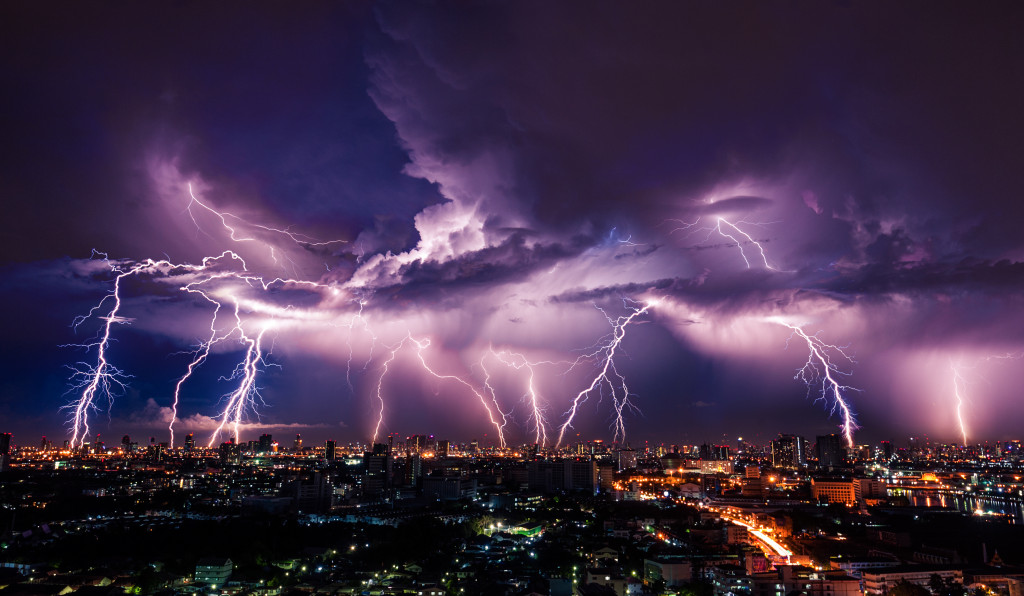- The U.S. experiences an average of 14 named storms annually, primarily impacting the eastern coastlines.
- Storms can cause significant property damage, including roof damage, flooding, fallen trees, power outages, and debris.
- Regular maintenance, such as cleaning gutters and trimming trees, can help mitigate potential storm damage.
- Homeowners should secure doors, windows, and loose items to prevent wind damage during storms.
- Installing storm shutters can protect windows from damage, and pre-storm preparation can minimize overall impact.
Storms can be one of the most destructive things to happen to a home. Strong winds, heavy rains, and hail are some elements that can cause significant damage and leave you with costly repairs. Unfortunately, no matter how well you prepare, some storms are too powerful to withstand. Here’s what you need to know about storms in the country, ways they can affect your property, and ways you can prepare your property for it.
Number of Storms in The U.S.
It’s estimated that the country experiences 14 named storms every year. Out of those 14, 4 reach hurricane strength that can cause immense destruction. The storms usually occur between June and November and are most likely to hit the eastern coastlines of the country.
Types of Storm Damage
There are various ways storms can affect your home. Here are some of them:
1. Roof Damage
One of the most vulnerable parts of any home is the roof. A storm can wreak havoc on it, causing shingles to tear off, weakening the structure, and potentially causing water damage to the interior of your home. If you suspect any roof damage, have it inspected by a professional immediately and take the necessary steps to repair it.

2. Flooding
Heavy rains or a flash flood can be a homeowner’s worst nightmare. It’s estimated that one inch of flood can cost $25,000 worth of damage. It can damage everything from floors, walls, and electrical systems to furniture and appliances. To prevent flood damage, ensure that your home is built up to code, has a tight seal around doors and windows, and that your gutter system is working and pulling water away from your home.
3. Fallen Trees and Branches
Trees can provide shade but can also pose a threat during a storm. Strong winds and heavy rains can cause trees to fall, landing on your house, cars, and anything in their path. A tree limbing service can help keep your trees healthy and trimmed, reducing their risk of breaking off during a storm.
4. Power Outages
A storm can take down power lines, causing chaos and darkening your home. With no electricity, you may be unable to use appliances, heating systems, and electronics. To prepare for an outage, have a backup generator and ensure your appliances are unplugged to avoid surge damage.
5. Debris
Storms can blow around debris, like rocks, to your home’s windows, causing cracks or breaking them. Cleaning up your yard and ensuring no furniture or planters are lying around can help reduce any unexpected damage.
Preparing Your Home
There are various ways you can prepare your home for storms. Here are four ways:
Clean Your Gutters
You must clean your gutters regularly to reduce any water damage. Clogged gutters can cause water to back up and seep into your home, weaken the foundation, or even attract pests. Additionally, you should consider putting a leaf lock on your gutter. This can protect it from debris blocking the gutter during a storm. Contact a local leaf lock gutter installation service and let them check your home’s gutter. They can choose the right guards and provide a secure installation.

Trim Your Trees
As previously mentioned, trees can do great damage during a storm. Trim any branches close to your home and remove any dead wood or weak limbs that make them more likely to break in a storm. This will help reduce the risk of broken branches landing on your home.
Secure Your Home
Secure your windows, doors, and garage doors as best you can to prevent wind damage. Additionally, ensure any loose items that can be picked up by the wind, such as furniture or planters, are put away.
Install Storm Shutters
Installing storm shutters is a great way to prevent any window damage. They come in various materials, ranging from accordion-style shutters to plywood panels that you can install yourself.
Preparing your home for storms is no easy feat, but taking the necessary steps will help minimize any damage a storm can cause. Make sure your roof is solid and debris-free, and trim all trees. With some preparation, you can rest assured knowing you have done what you can to minimize storm damage.

